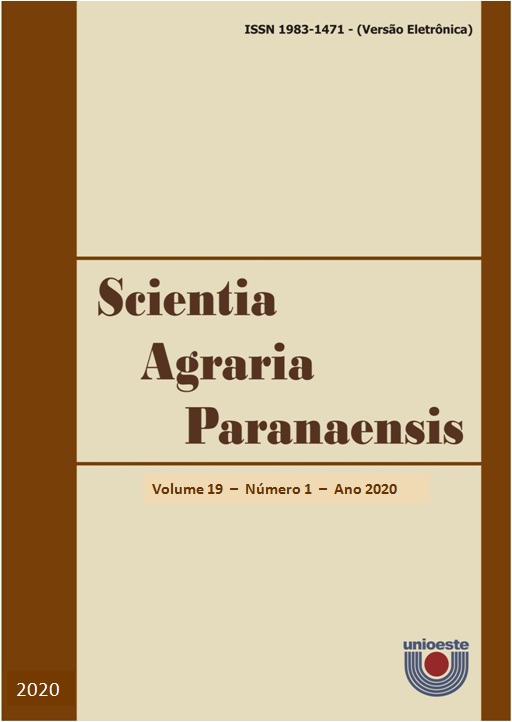Safflower: importance, use and economical exploitation
DOI:
https://doi.org/10.18188/sap.v19i1.21250
Agências de fomento
CAPES
Resumo
The safflower is an ornamental, medicinal, oleaginous, annual and herbaceous plant, and it is cultivated in more than 60 countries. In Brazil, it presents great edaphoclimatic adaptations for the different regions of the country. With wide economic exploitation, it encompasses: the floricultural sector with the floral stems in a fresh and dry form; the animal feeding with grazing, silage and seed cake; the food, pharmaceutical and oil industries with the use of oil according to its refine for the emulsification in bakery, elaboration of medicine and biodiesel; besides the use of coloring that comes from the dried petals in culinary, cosmetics and in fabrics, among other aptitudes of use. Thus, the present work had as objective to perform a national and international review of literature about the importance, use and economic exploitation of safflower.Downloads
Arquivos adicionais
Publicado
23-05-2020
Como Citar
MENEGAES, J. F.; NUNES, U. R. Safflower: importance, use and economical exploitation. Scientia Agraria Paranaensis, [S. l.], v. 1, n. 1, p. 1–11, 2020. DOI: 10.18188/sap.v19i1.21250. Disponível em: https://saber.unioeste.br/index.php/scientiaagraria/article/view/21250. Acesso em: 4 nov. 2025.
Edição
Seção
Revisões Bibliográficas
Licença
Aviso de Direito Autoral Creative Commons
Política para Periódicos de Acesso Livre
Autores que publicam nesta revista concordam com os seguintes termos:
1. Autores mantém os direitos autorais e concedem à revista o direito de primeira publicação, com o trabalho simultaneamente licenciado sob a Licença Creative Commons Attribution que permite o compartilhamento do trabalho com reconhecimento da autoria e publicação inicial nesta revista.2. Autores têm autorização para assumir contratos adicionais separadamente, para distribuição não-exclusiva da versão do trabalho publicada nesta revista (ex.: publicar em repositório institucional ou como capítulo de livro), com reconhecimento de autoria e publicação inicial nesta revista.
3. Autores têm permissão e são estimulados a publicar e distribuir seu trabalho online (ex.: em repositórios institucionais ou na sua página pessoal) a qualquer ponto antes ou durante o processo editorial, já que isso pode gerar alterações produtivas, bem como aumentar o impacto e a citação do trabalho publicado (Veja O Efeito do Acesso Livre).
Licença Creative Commons
Esta obra está licenciada com uma Licença Creative Commons Atribuição-NãoComercial-CompartilhaIgual 4.0 Internacional, o que permite compartilhar, copiar, distribuir, exibir, reproduzir, a totalidade ou partes desde que não tenha objetivo comercial e sejam citados os autores e a fonte.


